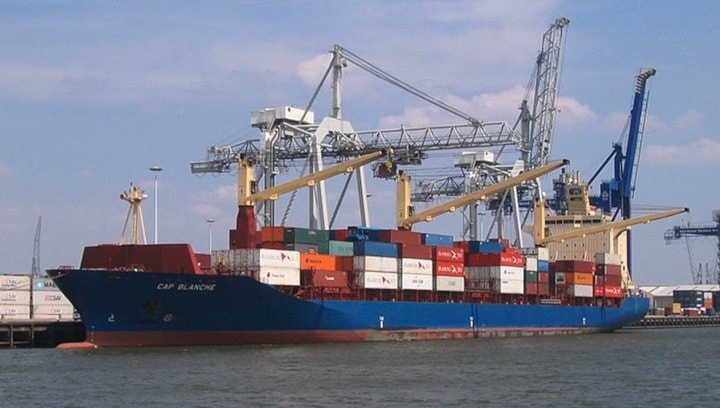Fog and insufficient use of navigational aids are among the reasons a container ship briefly ran aground inside the mouth of the Fraser River earlier this year, according to the Transportation Safety Board.
The 220-metre Cap Blanche was carrying more than 800 containers from Tacoma and had just begun heading up the river to its destination, Fraser Surrey Docks, when it began to turn too quickly and grounded on a silty section of Steveston Bend.
There were no injuries or pollution reported and the crew was able to use thrusters and engine movements to refloat the vessel on the rising tide 30 minutes later.
Reduced visibility of 150 metres due to fog meant the pilot should have frequently cross-checked the vessel's position and course using multiple navigational aids, rather than just one, the federal report said.
The GPS position predictor that was used was less accurate than usual because it wasn't connected to a high quality mobile antenna the pilot normally used, but did not bring that trip.
"If a navigator relies on a single piece of navigational equipment, there is a risk that potential errors or inaccuracies will go undetected," the report found.
The report also notes silting of the lower Fraser River reduced the width of the navigable channel at Steveston Bend, something the pilot knew but did not tell the non-local crew, who might have helped spot trouble.
Another container ship had previously grounded at the Fraser's entrance in 2003.
Huntington calls for dredging
Independent Delta South MLA Vicki Huntington called Thursday for the province to lead a long-term dredging plan for the lower Fraser.
"This economic engine is dependent on continued, safe navigation. And safe navigation is absolutely dependent on dredging," she said.
The provincial and federal governments previously provided $10 million in 2012 for one-time dredging of secondary channels, including Steveston and Ladner harbours.
But Huntington said more is needed to ensure the working harbours aren't left high and dry.
"The value of the Fraser River to B.C.’s economy demands ongoing sediment control."

